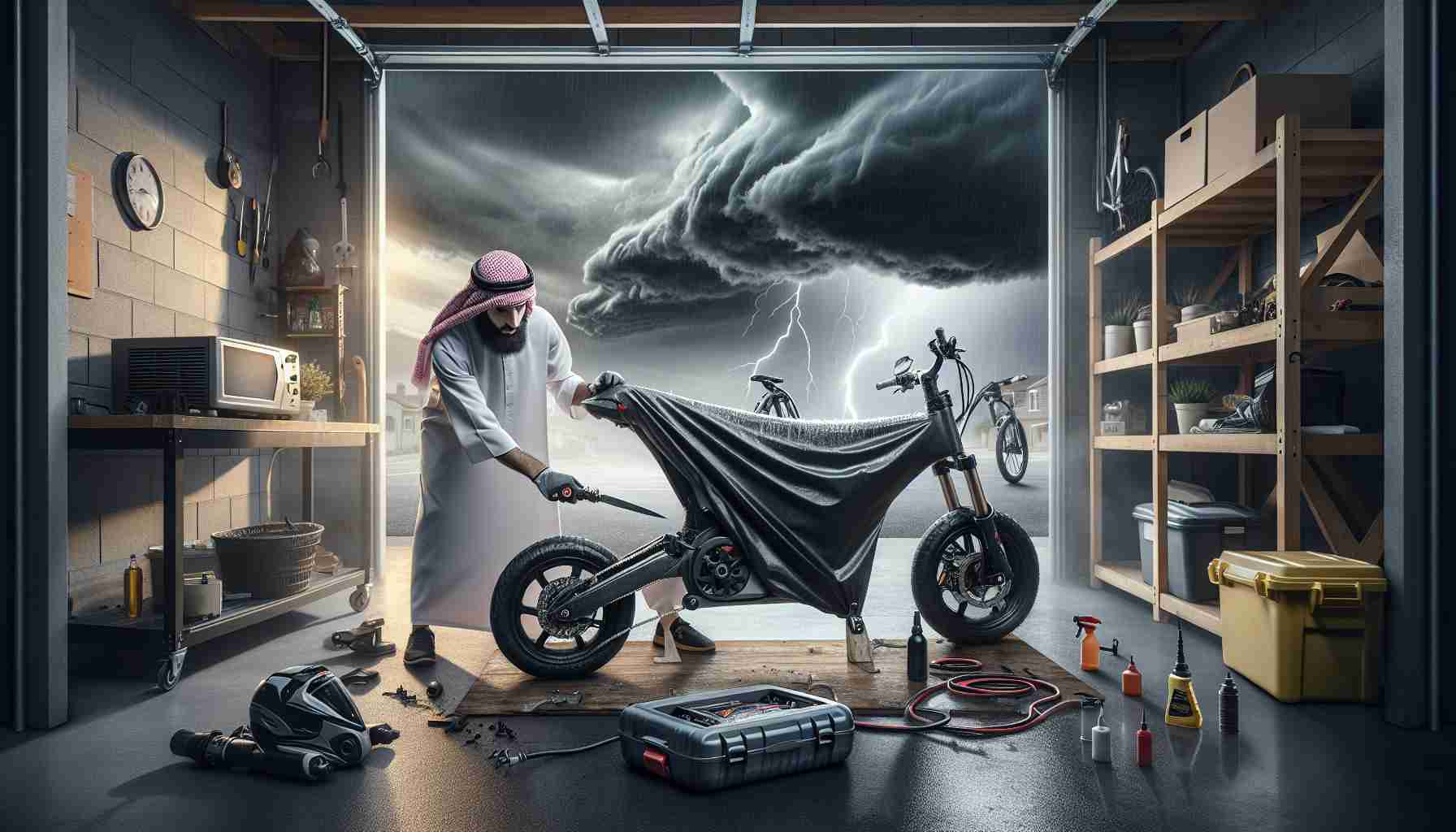Optimizing Battery Safety
When facing the approach of a storm, safeguarding your electric bike against water damage is crucial. The large lithium-ion batteries in e-bikes, while essential for storing electricity, are vulnerable to flooding. To protect your bike’s battery, it’s advisable to park it indoors in an elevated location, especially if you reside in a flood-prone area. In case it’s too heavy to carry upstairs, removing the battery and placing it on a higher floor can mitigate risks of water damage.
Enhancing Emergency Mobility
Beyond their daily utility, electric bikes can serve as a vital mode of transportation post-hurricane. With the ability to navigate blocked roads with ease, e-bikes play a significant role in accessing essential services and aiding in evacuation efforts. By taking precautions for safety hazards like debris and downed power lines, e-bikes enable individuals to swiftly travel to supply centers and medical facilities.
Post-Storm Power Solutions
Amidst power outages post-storm, utilizing your e-bike’s USB charging port can be a lifeline for recharging devices. Ensuring your battery is fully charged pre-storm and storing it securely allows you to power essential electronics like phones and flashlights when electricity is scarce. Moreover, the LED headlight on e-bikes can provide emergency lighting for prolonged periods, serving as a valuable asset in blackout situations.
Alternative Energy Sources
In the absence of electricity, leveraging solar chargers or portable power stations can maintain your e-bike’s functionality. Combining a portable power station with solar panels transforms it into a sustainable energy source, eliminating the need for traditional fuel generators. These innovative solutions offer a reliable means of keeping your e-bike and devices powered up during emergencies.
Protecting E-Bike Components
While safeguarding the battery is vital, it’s also essential to protect other sensitive components of your electric bike during a storm. Water damage can harm the motor, controller, and electrical wiring, leading to costly repairs or replacements. Consider covering exposed areas with waterproof materials or investing in specialized covers designed for e-bikes to ensure all parts are shielded from moisture.
Ensuring Tire Maintenance
In preparation for a storm, checking the condition of your e-bike’s tires is crucial for maintaining traction and stability on wet or slippery surfaces. Look for signs of wear and tear, and replace tires if the treads are worn down to prevent accidents during inclement weather. Proper tire inflation is equally important for optimal performance, especially when navigating through debris or flooded areas.
Dealing with Corrosion Risks
Beyond immediate storm impact, long-term exposure to moisture can lead to corrosion of metal components on your electric bike. After the storm passes, thoroughly inspect your bike for signs of rust or corrosion, particularly on exposed metal parts such as nuts, bolts, and chains. Applying a protective coating or corrosion-resistant lubricant can help prevent further damage and extend the lifespan of your e-bike.
Key Questions and Answers
1. What is the best way to store an electric bike during a storm?
To ensure maximum protection, store your e-bike indoors in a dry and elevated location away from potential flooding. Removing the battery and other detachable components can further reduce the risk of water damage.
2. How often should I perform maintenance checks on my e-bike to prepare for a storm?
Regular maintenance checks should be conducted at least once a month to inspect the overall condition of your electric bike, especially before the storm season. Paying attention to critical components like brakes, tires, and electrical connections is essential for optimal performance.
3. Are there specific tools or materials recommended for storm preparation of electric bikes?
Investing in waterproof covers, corrosion inhibitors, and tire repair kits can be beneficial for protecting your e-bike and ensuring it remains operational during and after a storm. Having these tools readily available in your emergency kit can save time and prevent damage.
Advantages and Disadvantages
One of the primary advantages of preparing your electric bike for a storm is ensuring that it remains functional and ready for use during emergencies, providing a reliable mode of transportation and power source. However, the main disadvantage lies in the potential costs associated with preventive measures, maintenance, and repairs, which may deter some individuals from fully optimizing their e-bikes for storm readiness.
For more tips on electric bike maintenance and storm preparedness, visit Electric Bike Review.
